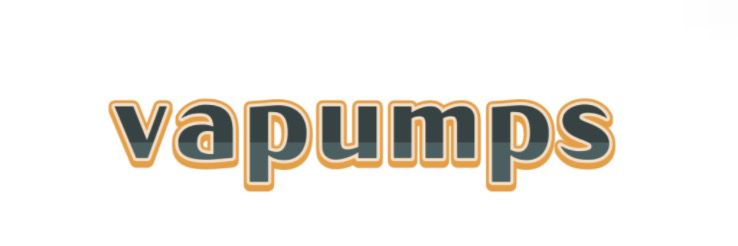Why Is Rubber Foam Insulation Overlooked Today?
The world of insulation materials has expanded remarkably in recent years, offering a tapestry of solutions for energy efficiency and comfort in both residential and commercial applications. Amid this variety, rubber foam insulation often finds itself resting on the backburner of consideration, overshadowed by more commonly known materials like fiberglass or spray foam insulation. But why does such a versatile and effective product go overlooked despite its numerous benefits? Let’s delve into the characteristics of rubber foam insulation and explore the reasons behind its scarce presence in contemporary construction discussions.
The company is the world’s best Rubber Foam Insulation Manufacturer supplier. We are your one-stop shop for all needs. Our staff are highly-specialized and will help you find the product you need.
Rubber foam insulation is a closed-cell structure, which means that the cells are not interconnected, providing a host of advantages. One of the standout features of this material is its exceptional thermal performance. It acts as an effective barrier against heat transfer, meaning it keeps indoor spaces warmer in the winter and cooler in the summer. Moreover, its moisture-resistant properties make rubber foam insulation particularly well-suited for climates with high humidity, as it helps prevent mold and mildew growth that can lead to more significant health issues down the line. Despite these properties, many builders and homeowners default to traditional options, often due to a lack of awareness about rubber foam’s capabilities.
An often-cited barrier to the adoption of rubber foam insulation is its perceived cost. While it's true that rubber foam can be more expensive upfront compared to other insulation materials like fiberglass, it’s important to consider the long-term savings associated with its superior performance. With lower energy bills, reduced need for heating and cooling, and fewer maintenance issues related to humidity and mold, the return on investment can be significant. However, this cost dynamic is not always clearly communicated, leaving potential buyers unaware of the true value and efficacy of rubber foam insulation.
The booming popularity of fiberglass insulation is another hurdle for rubber foam. Many contractors have established routines and supply channels centered around fiberglass. When faced with a decision, they may opt for what they know best. This can create a cycle where cost-effective, efficient products like rubber foam remain unknown to a broader audience. The reliance on familiar materials often perpetuates myths about what's practical and effective, leaving innovative solutions sidelined. In the era where sustainability is key, it is time to reevaluate traditional choices and educate consumers about the benefits they present.
Furthermore, it is critical to acknowledge the marketing side of insulation materials. Fiberglass and spray foam insulation have significant marketing budgets that drive public business—even undisturbed research and development efforts to promote innovations. In contrast, smaller manufacturers of rubber foam insulation often lack the financial resources to generate brand awareness and market share. Without significant marketing support, many consumers remain unaware of the potential rubber foam insulation can offer. This lack of visibility breeds misconceptions and reinforces the prioritizing of established materials rather than innovative solutions like rubber foam.
Additional reading:Unlocking the Benefits of Stabilised Chlorine Dioxide
5 Reasons to Choose High-Quality Chlorine Dioxide Tablets for Africa
Top HVAC Duct and Pipe Insulation Solutions for 2025
Regulatory factors also play a role in the selection process for insulation materials. Many building codes and compliance standards are focused on widely recognized product types, complicating the acceptance and introduction of newer materials. Consequently, builders may hesitate to recommend rubber foam insulation due to uncertainty about compliance, even when it may be superior to conventional types. The challenge here remains the slow adaptation of building codes and regulations to keep pace with advancements in technology and materials science.
Additionally, despite rubber foam insulation’s proven efficacy, there exist misconceptions about its performance. Misunderstandings about its soundproofing capabilities, fire resistance, and environmental effects can lead to hesitation in its adoption. A major contribution to these doubts lies in the lack of professional guidance available to consumers and builders alike. Rubber Foam Insulation Manufacturers need to provide comprehensive resources and training for contractors and builders to educate them on the benefits of their products. Even hosting webinars or workshops can significantly change the game, turning skepticism into advocacy. The more informed the marketplace becomes, the greater the prospects for widespread acceptance of rubber foam insulation.
Moreover, in the push for sustainability, rubber foam insulation should be spotlighted for its eco-friendliness. Many consumers are willing to invest in materials that reduce carbon footprints, but they are often unaware that rubber foam can be manufactured using recycled materials and is fully recyclable itself. Rubber foam insulation exemplifies a responsible choice when sustainability is a common goal among consumers and manufacturers alike. By emphasizing these eco-credentials, rubber foam could find a more favorable position as builders and homeowners look for greener solutions.
In closing, the overlooked status of rubber foam insulation results from a complex interplay of perceived cost, lack of awareness, limited marketing, regulatory uncertainties, misconceptions, and insufficient information dissemination. As society progresses toward sustainability and energy efficiency, it’s crucial to shift focus and elevate rubber foam insulation in conversations about insulation materials. Only by better informing the marketplace can we ensure that this effective insulation method gets the recognition and usage it truly deserves. Whether you’re a homeowner or a builder, consider connecting with a reliable Rubber Foam Insulation Manufacturer and explore the benefits of this incredible insulation material today.
Want more information on Acoustic Glass Wool Board Manufacturer? Feel free to contact us.




